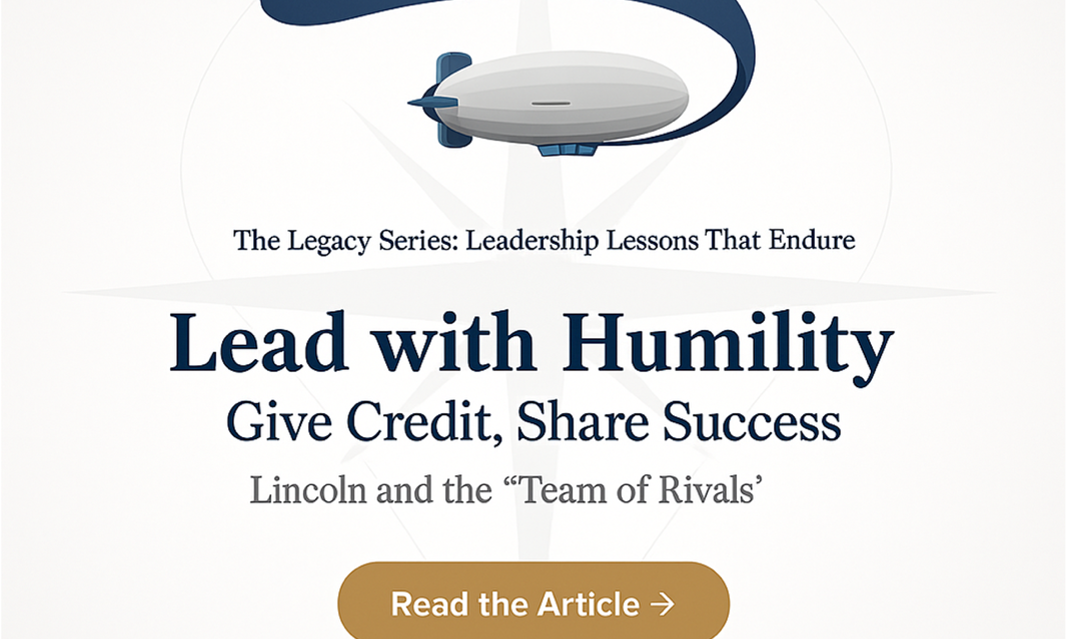The Legacy Series: Leadership Lessons That Endure
Long before it became a global business principle, Kaizen—meaning “change for the better”—began in the disciplined hearts of the samurai.
Samurai warriors practiced hansei, or self-reflection, after every battle and training session. They analyzed their decisions, studied their technique, and documented what worked and what didn’t. Their goal wasn’t perfection, it was progress.
Each day was an opportunity to grow stronger, wiser, and more precise. They didn’t fear mistakes; they respected them. Every error was considered a teacher.
Centuries later, after World War II, Japanese industries rebuilt their economy using that same spirit of reflection and improvement. At Toyota, engineers and line workers adopted Kaizen as a company-wide philosophy. Every employee, from the factory floor to the executive suite, was encouraged to identify problems and suggest improvements daily. It didn’t matter how small the idea was; progress was everyone’s responsibility.
Toyota leaders believed that greatness was built on thousands of small, continuous refinements—not big, dramatic reinventions. The result was a world-class culture of innovation and quality, where learning replaced blame and everyone became a contributor.
The Leadership Lesson
Kaizen isn’t just about efficiency—it’s about empowerment through reflection. It teaches that the best organizations aren’t driven by perfection, but by people who care enough to keep getting better.
When companies encourage employees to identify problems, share feedback, and explore new ideas without fear, they create what psychologists call psychological safety. It’s the invisible fuel that powers trust, innovation, and growth.
That’s why the best leaders treat mistakes as information, not indictment. They don’t ask, “Who did this?”—they ask, “What can we learn?”
This is the mindset of failing up—turning setbacks into stepping stones.
My Perspective: Failing Up Is the Fastest Way to Grow
I’ve always believed that the best people and the best companies don’t avoid failure. They fail forward.
I love the term “Fail Up.” To me, failing up means embracing mistakes as moments of learning. Every misstep and inability is an opportunity to improve a system, a product, or yourself.
When a mistake happens, I tell my employees, “Let’s fail up.” We open the conversation, explore what happened, and look for lessons together. It’s not about blame, it’s about building wisdom, and sharing ideas. When you treat failure as a shared opportunity to grow, the entire team gets stronger.
The real secret is to make reflection a habit, not a reaction. When you have routine reviews, done consistently and proactively, you create an ongoing rhythm of improvement. The highest level of continuous learning doesn’t come from fixing problems after they happen; it comes from preventing them by talking, reflecting, and evolving together at set intervals. Basically, schedule time to grow.
In my companies, employee reviews aren’t about judgment, they’re about growth. I tell my managers: start with praise and end with possibility. We celebrate what people do well and then focus on what’s next. Feedback isn’t a weapon. Feedback it’s a gift.
I also ask for feedback from fellow colleagues. When done in a safe environment, peer feedback becomes one of the most powerful tools for improvement. 90% of the time it’s positive feedback. People feel appreciated and they better understand how they positively impact their teammates. The 10% improvements are usually blindspots. Things they never thought about, knew about, or even considered. It breaks down silos, builds trust, helps people see themselves through new eyes, and creates a roadmap for growth.
You might be surprised how much people actually crave feedback. Everyone wants to know how they’re doing. Everyone wants to improve. It’s not criticism that people fear—it’s embarrassment or blame. When you remove fear, feedback becomes fuel.
The goal isn’t perfection. It’s progress.
Build a culture full of learners. Create a team that sees every challenge as a chance to get better. Because in business, as in life, the winners aren’t the ones who never fall. They’re the ones who keep failing up.
How to Build a Kaizen Culture in Your Business
1. Turn Reviews Into Conversations.
Replace “evaluation” with “evolution.” Focus on growth, not grading.
2. Encourage Daily Reflection.
Ask teams to share one improvement or lesson each week. Small insights compound into big progress.
3. Praise What’s Working.
Positive reinforcement inspires repetition. Always start reviews with genuine recognition.
4. Embrace “Failing Up.”
When mistakes happen, talk openly about what was learned. Treat every setback as data, not drama.
5. Make Feedback a Two-Way Street.
Invite employees to share how leadership can improve too. Growth flows both directions.
6. Empower Everyone.
Kaizen works when everyone has a voice—from new hires to executives. Improvement isn’t a department—it’s a mindset.
The EQ Factor: Safe Feedback Builds Strong Teams
High emotional intelligence is the foundation of Kaizen. Leaders with EQ create environments where people feel comfortable sharing ideas, admitting mistakes, and asking for help.
When feedback becomes part of everyday communication, not a once-a-year event, it stops feeling like a threat and starts feeling like care. That’s when creativity unlocks. That’s when people start taking pride in progress, not perfection.
Why It Works
Harvard Business Review found that companies that practice continuous feedback and improvement enjoy 37% higher employee engagement and 31% greater productivity²⁴. Forbes reports that teams with regular feedback are 3x more likely to innovate and 5x more likely to stay with their employer²⁵. And Toyota’s own studies show that Kaizen systems reduce inefficiencies and improve morale across all departments²⁶.
Continuous improvement isn’t just operational—it’s emotional. It builds trust, confidence, and collective pride.
Final Thought
The samurai sought mastery through reflection. Toyota built excellence through collaboration. The connection between the two is timeless: greatness comes from learning.
When leaders create a culture where it’s safe to fail, reflect, and improve, they don’t just build better products—they build better people. Your employees don’t need to be perfect. They need enlightenment, encouragement, and direction to grow. Because the secret to lasting success isn’t avoiding failure. It’s about failing up together.
Be the Leader Who Lifts Others Higher
Great leadership isn’t just about vision—it’s about taking care of people. The most successful companies don’t just hire talent; they invest in their teams’ well-being.
Studies show that:
-
Companies with strong benefits programs see 56% lower turnover and 50% higher engagement (Gallup).
-
Organizations that prioritize employee well-being experience 21% greater profitability and 17% higher productivity (Harvard Business Review).
-
Employees who feel valued and supported are 4x more likely to recommend their company as a great place to work (SHRM).
That’s the power of care—it fuels loyalty, focus, and a culture people are proud to be part of.
At Benefit Airship, we believe every business deserves that advantage. We built the only employee benefits program that costs employers $0—yet delivers medical, dental, vision, mental health, and prescription benefits to every worker: full-time, part-time, or contract.
Our mission is simple: Help businesses grow by helping people thrive. Because great leaders don’t just build companies—they build communities. And when your people rise, your business soars.
Sources
²⁴ Harvard Business Review – The Feedback Fallacy
²⁵ Forbes – Continuous Improvement and Employee Engagement
²⁶ Toyota Production System – Kaizen Principles and Practices




